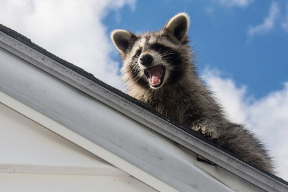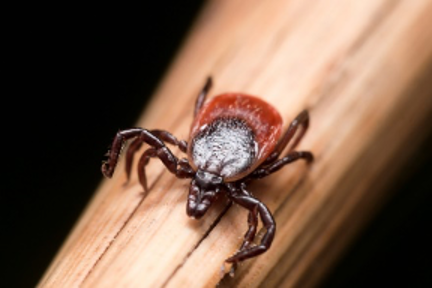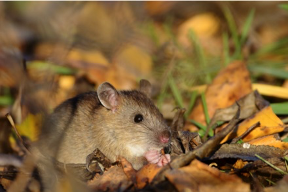Wild animals are unpredictable. When nuisance wildlife invades your property and gets into your home, it can be jarring, surprising and even scary. Knowing how to properly address the problem quickly and effectively means removing existing wildlife and protecting your home or property against future invasion.
Whether you have bats, deer, squirrels, raccoons, or other rodents, our wildlife control experts can soothe frazzled nerves with humane solutions to ongoing problem wildlife. We’re with you through the entire process from evaluation to repairing damaged property. The best way to prevent unwanted encounters with wildlife is to understand the behaviors of each critter.
How Do I Keep Bats Out of My Home?
Nothing will send family members hiding behind locked doors quicker than the sudden appearance of a fluttering bat in the living room. Despite their small size and shy nature, bats are startling creatures. Catching and removing them can be an intimidating and precarious endeavor.
The best way to remove bats from your home is to get in touch with a professional wildlife control company. Attempting to remove bats on your own could be dangerous to you, your home, or the wildlife itself.
Bat removal is performed on the exterior of the home only, even if activity has been reported inside. General removal is performed in a duration of 10 trips. We seal up the entire house and add the bat trap in order to get the bats to leave the home.
How Do I Keep Squirrels and Raccoons from Nesting in My Home?
Squirrels and raccoons love small crawlspaces and vents where they can nest or stash food. They are problematic in seasonal vacation homes where the property is uninhabited for stretches of time. Keeping these pests away means trapping any would be squatters and excluding future free loaders.
Though easily scared away, when cornered squirrels and raccoons can be vicious and unpredictable. They are messy animals that carry ticks and diseases. The best way to remove them is with live traps handled by a professional.
To prevent future visits from squirrels and raccoons, many steps can be taken:
· Inspect and repair window screens
· Cover roof vents and fans
· Trim trees back away from your home
· Cover chimneys
· Repair crumbling mortar
· Keep garbage containers secure
· Relocate bird feeders
· Keep pet food inside
One of our wildlife control technicians can assess your home and assist with all the necessary accommodations to keep squirrels and raccoons in their natural habitat and out of yours.
What Can I Do to Keep Mice and Rats Out of My Home?
Rats and mice are the most common home invaders. They seek food and warmth during the fall and winter months and are harder to control because of their small size and ability to elude traps. Even larger sized rats have the uncanny ability to slip through small cracks and into your home or business.
Rodents have exceptional sense of smells and will aggressively follow food aromas. They can sense warm air drafts from small cracks and openings in homes and buildings. Once inside, rats and mice are notorious gnawers and have been known to start electrical fires. They will build nests and breed if left unchecked. Mice and rats are also known to carry many different diseases.
Stopping rodents means sealing your home against infestation. A trained technician experienced in rodent behaviors can point out the areas around your property that are at risk. We can also do the work and follow up to make sure rodents aren’t getting in. If you’ve already seen signs of mice or rats in your home, we can orchestrate a program to eliminate the existing pests and prevent further influx.
How to Deal with Larger Problem Wildlife: Deer, Fox and Coyotes
Farms, orchards and rural homes experience another level of nuisance wildlife. If larger animals are creating problems on your property, we have the knowledge and means to help.
Deer like your gardens and plants. They don’t discriminate and if habitat is limited and food scarce, they will move in. A fence is the easiest method to discourage them - as long as it’s electrified or at least 10 feet tall to prevent them from jumping over. These solutions aren’t always cost effective or practical. However, deer repellents are another option for saving your gardens and plants.
Most repellents cannot be used on fruits, vegetables, and crops due to their bad odor and taste to humans. Repellents may be based on soaps of fatty acids, fungicides, bitter compounds, predator urine or glandular extracts, irritating essential oils, garlic, capsaicin, putrescent egg solids, and other agents. Few of these repellents retain their ability to discourage feeding for very long, which means reapplications are necessary at intervals. One of our pest control experts can help you decide which deterrent or repellent is best for you.
Fox pose a potential threat to livestock and pets. They can also carry rabies. Though shy, fox have been known to den under decks and sheds. Live traps are the best method for capturing and relocating fox. Because of their shy nature, placing traps in tall grass and secluded areas with strong smelling bait works best.
Coyotes are another threat to pets and livestock. They are larger a require specialized traps to snare them. We can use wildlife cameras to identify the areas coyotes are traveling and remove them from invading your property.
How Do I Get Safe and Effective Wildlife Control Near Me?
From mice to raccoons to coyotes, our technicians are trained to safely remove problematic wildlife and prevent their return. Contact us today for proven pest control results in the Minnesota and Ohio area. We let wildlife remain wild.









